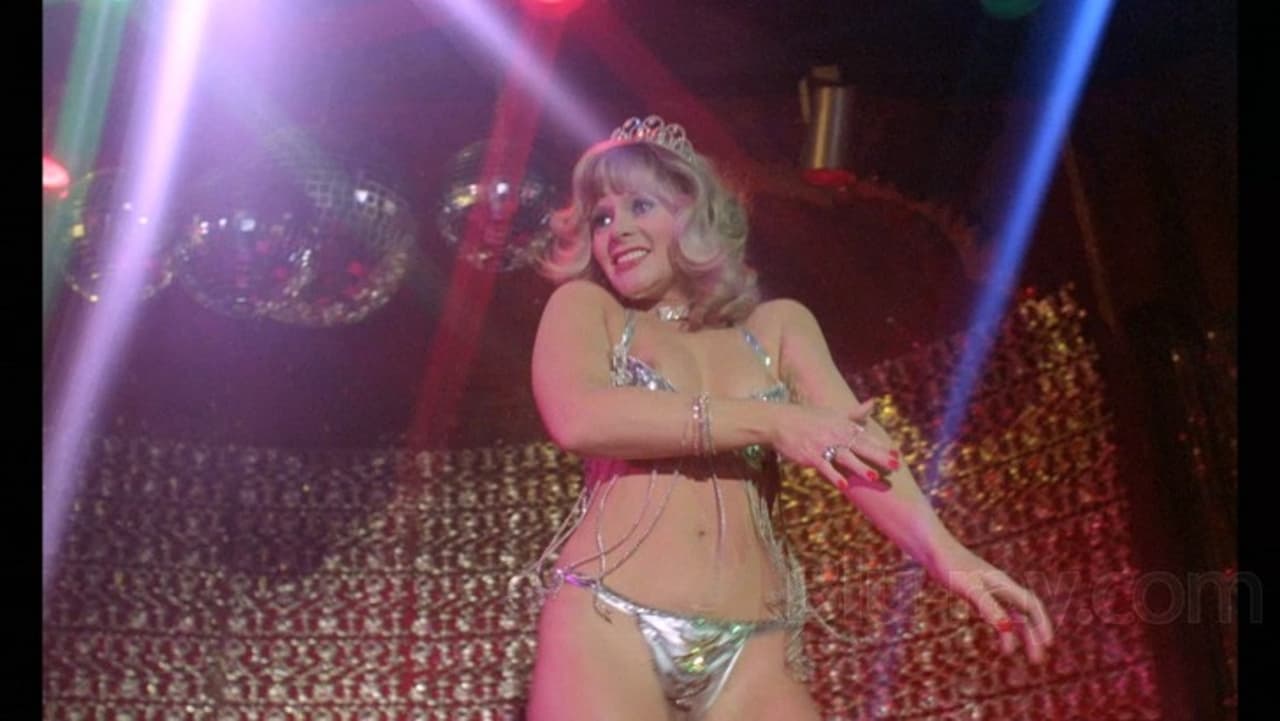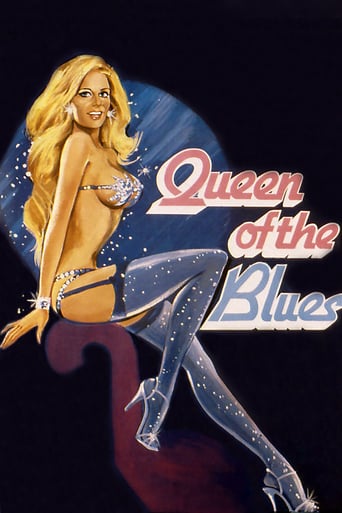



The greatest movie ever!
I like movies that are aware of what they are selling... without [any] greater aspirations than to make people laugh and that's it.
View MoreAt first rather annoying in its heavy emphasis on reenactments, this movie ultimately proves fascinating, simply because the complicated, highly dramatic tale it tells still almost defies belief.
View MoreOne of the film's great tricks is that, for a time, you think it will go down a rabbit hole of unrealistic glorification.
View MoreShockingly poor mixture of strip show footage (most of it filmed from a static position away from the action) and gangland melodrama.Two brothers - big and small, the long and the short of it - invest their dirty old man uncle's money in a strip club. Two gangsters - a naff joker and a bald meathead - turn up demanding protection money. Eventually, after much repetition of threats and stripping plus the odd half-hearted sex scene with the little brother, uncle turns up and announces that he's got the heavies called off as his money all itself comes from the protection racket. And that's the end of that.The film was clearly shoved together with as little care, attention and love as could humanly be imagined. As if the plot wasn't poorly conceived enough, the "script" shoves in a few scenes where the girls are scared of a ghost (!), some backstage banter (the only scenes where the film's name star, Mary Millington, has any dialogue) and much too much cheeky chappy "comedy" compèring from the long tall brother; this and much of the rest of the dialogue is littered by the worst jokes you will ever find yourself insulted by. This long tall brother is played by the offensive bit-part player John M. East, a down-at-heel nob who was surely the least deserving leading man to ever disgrace a British cinema screen.This slipshod film was made at the fag end of the British sex comedy boom. After being stung by the flop of the execrable Confessions from the David Galaxy Affair, pornographer turned film producer David Sullivan decided not to hire a better director or scriptwriter but rather to keep the same careless creeps and simply give them less cash to squander. The result is cheap and sordid trash, reeking with contempt for both the girls who are forced to demean themselves by doing nothing but strip for the poorly-placed camera and an audience who were being asked to part with their hard-earned cash for this tat. Millington killed herself soon after this was in the can (perhaps she saw a cut of it?) but Sullivan continued to hire rogues to make what are presumably even worse films for a few more years.
View MoreSPOILERS 'Honestly girls-I'd of thought when you'd seen one pair of tits you'd seen the lot' remarks one philosophising stripper in Queen of the Blues, a plea that clearly fell on the deaf ears of director Willy Roe and producer David Sullivan- two men responsible solo and collectively for exploitation hits Come Play With Me, The Playbirds and Emmanuelle in Soho. There's very little to Queen of the Blues other than a bunch of strip-acts filmed at a downmarket Soho club- which all glitter balls, garish colours and faded glamour is the perfect locale for Roe and Sullivan's sensibilities. Just as The Playbirds was derivative of 50's shocker Cover Girl Killer, what little plot there is sandwiched in-between the turns in Queen of the Blues has echoes of B-movie crime cheapies of the Fifties, as well as Old Compton Street melodramas like The Shakedown (1959). Brothers Mike and Tony Carter buy up a fading strip-club- a venture funded by their porn-obsessed uncle (Ballard-Berkeley). It's a roaring success until a pair of villains, played by jockey-sized Felix Bowness and burly, bald Milton Reid muscle in on the business demanding protection money. They're a classic double act, Reid whose career in playing heavies dates back to the time when he still had hair has a face made for gurning and snorts on an inhaler throughout. While Bowness spends most of his screen time eying up strippers and making observations like 'what a little charmer.Corr.I'll have some of that'-dialogue he was probably never asked to repeat on Hi-De-Hi. Like the Anti-hero of The Kinks' Preservation concept albums, Mike Carter models himself on the comedian Max Miller. He even takes to the stage, as a sort of stripper's compere, treating the audience to jokes that even the man who pens gags for Christmas crackers wouldn't like to have on his conscience. The rest of the film monotonously alternates between strips-acts, scenes of Bowness and Reid bullying, ugly soft-core fumblings, excruciating routines from the pseudo-'Cheeky Chappie', West-End street scenes and awkwardly inserted shots of the strip-club's audience, till the whole thing expires around the hour mark. The brothers are eventually sold out by one of the strippers, and the villains beat them around a bit but everything is all right in the end. Queen of the Blues was clearly envisioned as a star vehicle for Mary Millington who plays the film's eponymous head stripper but very little in the final-result bears out that interpretation. She's given next-to-nothing to do than mutely gyrate on stage, and although her character is spoken about such revered tones as 'a local girl that all the fellas are trying to mate' you'd never guess she was meant to be the star of the movie. The strippers' dressing room chit-chat is funny in a crude and bitchy way ('have arse will travel''every-time she blinks its like a flock of pigeons taking off') but Roe whose direction on The Playbirds was at least competent, slips to the low ebb of the ladder in filming the backstage scenes which are crippled by poor sound and static camerawork. If Sullivan hadn't dug deep into his pockets to hire well known actress/models for these roles (Nicola Austine, Rosemary England) you'd swear Roe had shot the film fly on the wall with real strippers rather than actresses and improvised rather than scripted dialogue. Despite the below the belt tone the only thing of interest backstage is the stripper's encounters with a skeleton-man spectre that haunts the stripclub 'if we had it off together' one girl points out 'all I'd get would be a phantom pregnancy'. Eventually the ghost is revealed to be nothing of the sort, but part of an almost Scooby-Doo like hoax to drive the strippers from the club (you half-expect the culprit to remark 'I would have gotten away with it, if it wasn't for those pesky strippers'). At one point the 'ghost' terrorises one of the strippers as she's coming off-stage, a prank surprisingly not played out on the Queen of the Blues herself but on Rosetta aka actress Pat Astley. No one played dumb blondes quite like Pat Astley and there are few British sex films that don't feature her, though you'd never know it since most her roles were bit parts that entail her being murdered in the opening seconds (The Playbirds) or featuring in nude or sex scenes (nearly everything else). Her name if spelt right would always end up near the bottom of cast credits, but Blackpool's premiere exploitation starlet did occasionally break out of the also-ran rut. Astley's career highlight was the video-era horror film Don't Open Till Christmas, where she had the dubious honour of being touched up by a Christmas hating madman and flashing at veteran actor Edmund Purdom. Her other moment in the spotlight came from an even more unlikely source-throughout the Seventies magazine Films and Filming would illustrate their covers with side-by-side stills from two of the months new releases indiscriminate of how varied the contents of the two films were (Taxi Driver meets The Dog Who saved Hollywood- anyone?). Bafflingly half of the cover of their February 1978 issue was dedicated to Pat balling away in Let's Get Laid, a nice bit of publicity considering she's only in that film for about five seconds. And the movie doing battle with Pat Astley for the cover and the attention of Films and Filming readers that month? just some little known film called Star Wars! Sadly Queen of the Blues is only sporadically entertaining, and despite being little more than a 60 minute recording of the most famous bums and bosoms of the day still is a chore to sit through. If there's anything to be gained by watching latter day Sullivan productions its the realisation of all the time, money and effort he spent on the comparatively epic Come Play With Me and The Playbirds, everything that came afterwards was a cost cutting, penny counting exercise with ever more diminishing results.
View More